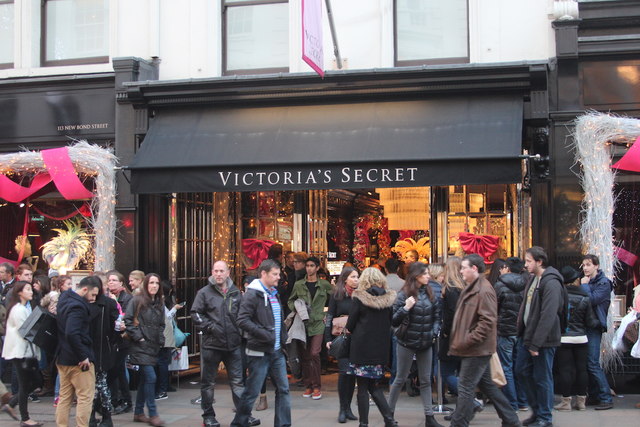Why Victoria’s Secret will never be too inclusive
After a four-year hiatus, the infamous Victoria’s Secret fashion show graced the runway once again on 26 September 2023. This reinvented iteration of the show was released alongside a documentary, Victoria’s Secret World Tour; yet before its release, the new line-up of ‘Angels’ already garnered significant attention from many online. Critiques that these new models are too inclusive and no longer represent the traditional, coquettish beauty associated with the brand’s 2010 glory days spread quickly on social media. However, this notion that Victoria’s Secret have a duty to the public to remain stuck in the past whilst the rest of the world evolves has done nothing except harm everyday women, the new and old ‘Angels’, and Victoria’s Secret as a company.
The decision for Victoria’s Secret to separate from the brand recognition they built over four decades of operation was not wholly autonomous, with incredibly public backlash haunting the company for several years. However, this new dawn for Victoria’s Secret is absolutely a necessity for the modelling world, who still trail several years behind most in what is considered ‘Angel’ worthy. Despite this exciting new horizon for Victoria’s Secret, many online are outraged that the company wish to distance themselves from the unattainable, and sometimes dangerous, beauty standards that their empire was built upon. Calls for the new diversity amongst the Angels to be reversed have sparked a keen debate online about whether these stereotypical expectations for women’s bodies have any place in modern society.
The heavily patriarchal view of what is ‘Angel’ worthy has been irrevocably disrupted
When exploring this, it is impossible to ignore the connection between Victoria’s Secret and their market of male consumers. The very origins of Victoria’s Secret relate back to these familiar archaic ideals, with the stores first being marketed as a place for men to buy lingerie for women without embarrassment. This intrinsic link that Victoria’s Secret have created between themselves and the male market plays a large role in the idea that such stereotypical women’s beauty standards must be upheld, with the very foundations of the company relying upon women’s bodies being viewed through a male lens. Thus, with this increased diversity of body shape, size, and colour, the heavily patriarchal view of what is ‘Angel’ worthy has been irrevocably disrupted.
Such disruption is a necessity for our ever-evolving world. With time, this precedent for beauty being re-established by one of the most recognisable fashion brands of the past four decades can help in positively influencing the self-esteem of the everyday woman. When diversity of beauty is demonstrated and celebrated in public spaces (particularly one as famous as a Victoria’s Secret runway show), it discourages the idea that conformity to traditional beauty standards is necessary. To have the diversity of everyday women projected on a large and well-established stage can aid in the reversal of viewing women through a patriarchal lens.
This demonstration by a lingerie giant of unabashed inclusivity has the potential to send a ripple effect across the runway fashion industry as a whole
Online critics continue to argue that this new precedent for ‘Angel-worthy’ beauty that Victoria’s Secret is presenting will reduce the runway opportunities for models who have the more archaic, traditional ‘Angel’ image. Conversely, the opening of this door for body diversity can truthfully benefit models everywhere and of every body type. The egregious body image expectations forced upon models by the industry are no secret, and this demonstration by a lingerie giant of unabashed inclusivity has the potential to send a ripple effect across the runway fashion industry as a whole. This maintains the space for the ‘Angels’ that critics are nostalgic for, whilst simultaneously creating the opportunity for growth and evolution in what is considered beauty worthy of a Victoria’s Secret runway.
This episode of internet backlash makes clear that the history of sexualisation and the glorification of dangerous body images perpetuated by Victoria’s Secret for decades has permanently impacted their relationship with their consumers. The male lens forced upon the Angels has prioritised an unattainable aesthetic over fairly presenting the people that Victoria’s Secret create products for. This has bred an environment where commenters feel they have the right to criticise the bodies of the models employed by the company and to shame their attempt at inclusivity. This is exactly the reason why such massive brands must continue to present diverse models and aim to cater to an equally diverse audience. It is only with resilience to the archaic aesthetic expectations that are perpetuated by patriarchal ideals that this urge to comment on the bodies of such models will diminish and diversity can be celebrated on a wider scale.
Ultimately, it is by continuing to promote inclusivity in fields where it is lacking, such as the modelling world, that we can progress our ideals for beauty irrespective of the male lens and patriarchal expectations of what is deemed worthy of the ‘Angel’ title.

Comments